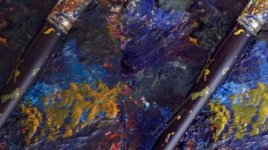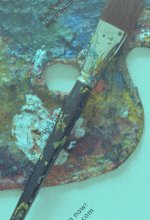mross
Newbie
Hi guys,
I have some massive trouble here with my Nikon Coolscan V ED / Silverfast 8. Hopefully someone can shed a light on what's going on..
I scan using the SA-21 film strip adapter. My workflow is:
- Overview scan of whole strip
- select image -> preview scan
- choose right profile in negafix (Kodak Gold 200, Kodak Ektar, ..)
- reset the RGB color adjustments to center of the color circle
No matter what I do, the negatives always (as a tendency) come out as green and too contrasty/with garish color. I can try to asjust with the color circle etc etc, but it still look freaking ugly.
When I scan slides (as positive), the scans always have a violet cast.
I tried switching on and off Auto CCR (Color Cast Removal), but it barely improves things, mostly messes up things even more. Even worse, switching it from off to on to off again, the colors look different afterwards than before. Is this a joke?
Even when I have found a setting of the color circle that produces somewhat less ugly color: when I move on to image right next to the one just scanned (same film strip, same scenery, same exposure.. I did multiple exposures with different focus settings), the color is completely off again and requires color settings completely different from that of the image just scanned. It is not some improperly framed scan by the way (with areas of no film in the scan or similar) which could throw off the auto calibration or something.
For a change I've downloaded and tried a demo version of Vuescan. Similar problem with the neg profiles loaded, but without any neg profile I can easily tweak the image to look more neutral and with less garish colors. However Vuescan shows strange noise patterns that look very unorganic, which Silverfast doesn't have.. which is a deal breaker for me.
Can anybody tell me what's going on? I'm experienced with professional motion picture film scanning (telecine, film scan), so I know some tweaks are always required to compensate between different processing batches etc etc.. but what Silverfast is currently doing is just grotesque. Something must be very very wrong here?
Is there a workflow that will give me somewhat neutral images to start with, given identical films, subjects, exposures, and processing?
All the best,
Marc
I have some massive trouble here with my Nikon Coolscan V ED / Silverfast 8. Hopefully someone can shed a light on what's going on..
I scan using the SA-21 film strip adapter. My workflow is:
- Overview scan of whole strip
- select image -> preview scan
- choose right profile in negafix (Kodak Gold 200, Kodak Ektar, ..)
- reset the RGB color adjustments to center of the color circle
No matter what I do, the negatives always (as a tendency) come out as green and too contrasty/with garish color. I can try to asjust with the color circle etc etc, but it still look freaking ugly.
When I scan slides (as positive), the scans always have a violet cast.
I tried switching on and off Auto CCR (Color Cast Removal), but it barely improves things, mostly messes up things even more. Even worse, switching it from off to on to off again, the colors look different afterwards than before. Is this a joke?
Even when I have found a setting of the color circle that produces somewhat less ugly color: when I move on to image right next to the one just scanned (same film strip, same scenery, same exposure.. I did multiple exposures with different focus settings), the color is completely off again and requires color settings completely different from that of the image just scanned. It is not some improperly framed scan by the way (with areas of no film in the scan or similar) which could throw off the auto calibration or something.
For a change I've downloaded and tried a demo version of Vuescan. Similar problem with the neg profiles loaded, but without any neg profile I can easily tweak the image to look more neutral and with less garish colors. However Vuescan shows strange noise patterns that look very unorganic, which Silverfast doesn't have.. which is a deal breaker for me.
Can anybody tell me what's going on? I'm experienced with professional motion picture film scanning (telecine, film scan), so I know some tweaks are always required to compensate between different processing batches etc etc.. but what Silverfast is currently doing is just grotesque. Something must be very very wrong here?
Is there a workflow that will give me somewhat neutral images to start with, given identical films, subjects, exposures, and processing?
All the best,
Marc



